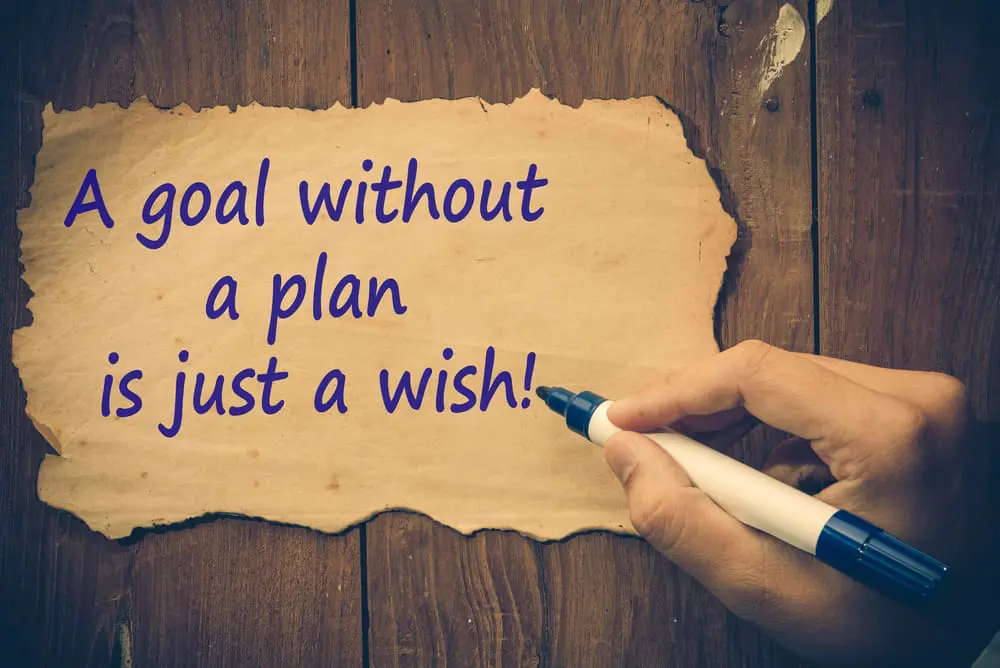Debt, Savings, and Credit Challenge: A Winning Three-Step Plan For Paying Off Debt, Increasing Savings, And Improving Credit. Find Out More In Our Latest Article!
THIS ARTICLE MAY CONTAIN AFFILIATE LINKS, MEANING I GET A COMMISSION IF YOU DECIDE TO MAKE A PURCHASE THROUGH MY LINKS AT NO COST TO YOU. PLEASE READ MY AFFILIATE DISCLOSURE FOR MORE INFO.
Don’t Have Time To Read The Full Article. Here’s What You Are Missing.
- DEBT, SAVINGS, AND CREDIT CHALLENGE success in three easy steps.
- Setting Up Your Winning Challenge.
- Understanding the Challenge
- The Importance of Paying Off Debt
- The Role of Savings in Financial Stability
- Improving Credit for a Better Financial Future
- Top Strategies For Paying Off Debt
- Prioritizing Debts for Repayment
- Get ready to set your winning goals.
- Winning Formula for Paying Off Debt
- Winning Formula for Setting Savings Goals
- Winning Formula for Understanding Credit Tiers
- Bonus Tips To Win The DEBT, SAVINGS, AND CREDIT CHALLENGE
- Frequently Asked Questions
Millions of individuals are struggling with debt, savings, and credit and want to make a change.
Is the Millennial Credit Advisers DEBT, SAVINGS, AND CREDIT CHALLENGE for you?
It’s a easy-to-follow plan, a plan that anyone can use, and it’s a great way to change their financial situation any time of the year.
This three-step challenge can motivate you to pay off your debt, increase your savings, and improve your credit and more.
DEBT, SAVINGS, AND CREDIT CHALLENGE success in three easy steps.
First, challenge yourself to start paying off your debt, including outstanding, overdue, and collection accounts. Starting with your lowest or highest debt depends on a few factors. Regardless of your approach, always pay more than the minimum monthly payment.
Second, set a goal to challenge yourself to save more money bi-weekly, bi-monthly. You can do this by rounding up your savings and debt to the nearest dollar and then using that extra money to increase your savings. Use an account that pays your savings extra interest in return.
Finally, challenge yourself to improve your credit score by one, ten, or more points.
Bonus: Challenge yourself to beat our record: 181-Point Credit Score Increase: More Details Inside!
Use our free credit report review checklist to help you get started.
The DEBT, SAVINGS, AND CREDIT CHALLENGE is a fun way to become debt-free.
Let’s be real about winning this challenge. It’s a great way to control your finances and positively change your financial situation. You don’t have to wait, start any time of the year.
By following the plan’s proven formula for paying off debt, saving, and dealing with credit, you can become debt-free and ultimately improve your credit score.
How can you accomplished all three and more. This successful formula is sprinkled throughout the article.
Setting Up Your Winning Challenge.

If you’re ready to take on the DEBT, SAVINGS, AND CREDIT CHALLENGE, here’s how to get started:
- Set your goals: Determine how much debt you want to pay off, how much you want to save, and what credit score you want to achieve. Be realistic and specific about your goals.
- Create a budget: Write down the numbers that matter. Track your expenses and income to see where to cut back on unnecessary spending and allocate more money toward your goals (reduced debt, more savings, and better credit). Use a budgeting tool or app to make reaching your goals easier.
- Prioritize debt repayment: Start with your lowest or highest debt. Always pay more than the minimum payment. Once that debt is paid off, roll that payment over to your next debt and repeat the process. Debt-free!
- Save more: Challenge yourself to increase your savings by rounding up your debt and savings to the nearest dollar. Set a specific monthly savings goal and save a little more from extra paydays, bonuses, or side hustles.
- Improve your credit score: Analyze your payment history. Start by paying your bills on time, keeping your credit utilization low, and disputing any legitimate errors you find on your credit report.
If you are establishing credit for the first time, consider opening a secured credit card or becoming an authorized user on someone else’s card to build credit.
Remember, the DEBT, SAVINGS, AND CREDIT CHALLENGE is a three-step plan that anyone can follow to become debt-free and financially stable.
Find out how you can positively change your financial situation by setting realistic goals, creating a budget, prioritizing debt repayment, saving more, and improving your credit score.
Here’s your winning story. You can win the DEBT, SAVINGS, AND CREDIT CHALLENGE.
Understanding the Challenge
The DEBT, SAVINGS, AND CREDIT CHALLENGE is designed to help you achieve financial stability. The plan isn’t complicated and is so easy to follow. It’s all about motivation and winning the challenge.
A plan so shockingly simple. The challenge is an easy and fun way to become debt-free: pay off debt, increase savings, and move your credit to the next higher tier.
The Importance of Paying Off Debt
You can take many steps to become debt-free; paying off debt first is the most successful way.
The formula for paying off debt is simple: start with your lowest or highest debt. It does matter.
Let’s start with the lowest first. Paying the lowest first is a great way to see immediate benefits.
When paying off your debt, round the payment up to the nearest dollar plus ten or more. Then, pay the interest amount once monthly in addition to your regular rounded-up payment.
Debt Demolition mode accelerates your debt repayment to the next level, and that can help you win your debt challenge. Learn more Debt Demolition using the Debt Meltdown Method.
The Role of Savings in Financial Stability
Saving money is an essential part of financial stability. The savings challenge aims to increase your savings by the amount that best suits your current financial situation and compound it through high yield savings.
Do your own checkout charity! Round your savings & debt up to the nearest dollar. Use that same principle to increase your savings when rounding up at the checkout counter.
Set a goal to save a specific amount each month, and when you’re able, save a little more from those extra paydays during the year or that well-deserved bonus or extra side hustle income.
Round up those extra dollars and save them for something better, like an emergency, a spending splurge, or to improve your financial situation.
Improving Credit for a Better Financial Future
Improving your credit score is crucial to achieving financial stability.
Challenge yourself to improve your credit score by one point or more. To do so, you need to understand what factors affect it.
These include your payment history, debt utilization ratio, length of credit history, types of credit, and recent credit inquiries.
You can positively impact your credit score by paying off debt and increasing savings.
By following the DEBT, SAVINGS, AND CREDIT CHALLENGE formula, you can become debt-free and financially stable sooner than you think. Challenge yourself to pay off debt, save more, and improve your credit.
The Debt Challenge
The most crucial part of winning the DEBT, SAVINGS, AND CREDIT CHALLENGE is paying off debt. It is a vital first step toward financial freedom. Here are four strategies for paying off debt:
Top Strategies For Paying Off Debt

Snowball Method: Start by paying off the debt with the smallest balance first, then move on to the next smallest balance.
This method provides a sense of accomplishment and motivation as debts are paid off quickly.
Avalanche Method: First, pay off the debt with the highest interest rate, then move on to the debt with the next highest interest rate.
This method saves more money in interest but may take longer to pay off debts.
Meltdown Method: First, pay off the debt with the highest interest or balance. Then, make the required minimum payment, an additional payment of half the minimum monthly, and one interest payment monthly.
The idea is to pay the minimum payment plus half the minimum payment and make an interest payment each month.
This method eliminates and meltsdown debt, provides a greater sense of accomplishment, and is a powerful motivator as debt is paid off quickly. Continued paying additional principal and interest monthly will reduce and immediately help your debt melt away.
You should roll that total payment to your next debt and repeat the process. Continue doing this until your debt is paid in full. Now you are debt-free!
Balance Transfer: Transfer high-interest debt to a credit card with a lower interest rate. This method can save money on interest but requires discipline to avoid adding more debt.
Prioritizing Debts for Repayment
When prioritizing debts for repayment, consider the interest rate, minimum payment, and total balance.
High-interest debts should be prioritized, but making at least the minimum payment on all debts is essential to avoid penalties and fees.
Rounding Up Payments to Accelerate Debt Reduction
Rounding up payments to the nearest dollar is an easy way to accelerate debt reduction. For example, if the minimum fee is $50.00, pay $60.00 instead. This extra $10.00 will go towards the interest but will soon reduce the principal paid over time. Which puts your debt reduction plan on auto and helps you reduce debt.
Paying off debt is a critical step toward financial freedom, and the DEBT, SAVINGS, AND CREDIT CHALLENGE provides a simple three-step process to achieve this goal.
Anyone can become debt-free and achieve financial success by using a few easy strategies: prioritizing debts, increasing savings by rounding up payments, and augmenting credit.
DEBT, SAVINGS, AND CREDIT CHALLENGE
Want to increase your savings and improve your credit score? Take advantage of the DEBT, SAVINGS, AND CREDIT CHALLENGE!
Update your old goals. Set realistic goals for each DEBT, SAVINGS, AND CREDIT CHALLENGE you start winning.
Start paying off debt, saving money, and improving your credit score.
What’s great about the DEBT, SAVINGS, AND CREDIT CHALLENGES is that it can be started anytime.
Get ready to set your winning goals.

Goal One: Decide how much debt you want to pay off and in what order. You can start with the lowest debt first to show immediate progress or the highest debt first to save more money in interest payments.
Goal Two: Set a realistic savings goal for your current financial situation. You can save a certain amount each month and round up your savings to the nearest dollar. This will help you save more money over time and reach your savings goal faster.
Goal Three: Improve your credit score by paying your bills on time, keeping your credit utilization low, monitoring your credit reports for fraud, ID theft, data breaches, dark web alerts, and disputing any legitimate errors on your credit report.
The Debt Challenge
Winning Formula for Paying Off Debt
Let’s be honest: if you are struggling with debt and looking for a way to pay it off?
- Paying off debt and having zero debt balance is the ultimate goal.
It is one of the most successful and rewarding ways to become debt-free. The less debt you have, it’s possible that your savings and credit start trending upwards.
However, it is essential to use practical methods and some hands-on techniques to become debt-free, including:
- Negotiating with creditors for lower interest rates or payment plans.
- Creating a budget and sticking to it.
- Cutting back on unnecessary expenses and using the extra to achieve your debt and saving goals.
- Using debt consolidation programs to decrease debt load.
- Paying more than the minimum payment on balances.
The Savings Challenge
Winning Formula for Setting Savings Goals
The first step in increasing your savings is to set a realistic goal for your current financial situation. You can start by looking at your monthly expenses and income to see how much you can save each month.
Now start saving a little extra; start out small with $10.00, $100.00, $1,000.00, $10,000 or more bi-weekly or bi-monthly. The amount does matter! The objective remains the same “start saving.”
Once you have a savings goal in mind, you can start to work on ways to reach it.
One way is to use a budgeting app to track your expenses and identify areas for savings.
You can also set up automatic savings transfers from your checking account to your savings account to make saving money easier.
Innovative Ways to Increase Savings
Many innovative ways exist to increase your savings and reach your savings goals faster.
For example, you can participate in a savings challenge like the 52-week savings challenge, where you save a certain amount of money each week for a year. The winnable challenge is to increase the amount 10x your monthly goal and watch the results.
You can also use apps to help you win the savings challenge and save that money for a rainy day. Quicken vs YNAB: Choosing the Right Financial Management Tool.
Intelligent Strategies for Spare Cash
When you have extra money, it’s essential to use it wisely to increase your savings and pay off debt.
One smart strategy is to put that extra money towards your highest-interest debt to save on interest payments over time.
Another strategy is to invest that money in a high-yield savings account or a low-cost index fund to earn more money on your savings.
The DEBT, SAVINGS, AND CREDIT CHALLENGE is an easy three-step process that anyone can follow to help pay off debt, save money, and improve their credit score over time.
By setting goals, using innovative savings strategies, and making wise financial decisions, you can achieve financial freedom and build a better future for yourself and your family.
The Credit Challenge
Winning Formula for Understanding Credit Tiers
Credit scores are divided into tiers, each representing a different level of creditworthiness.
The tiers are:
Excellent (720-850)
Good (680-719)
Fair (620-679)
Poor (580-619)
Very Poor (300-579)
The higher your credit score, the better your chances of getting approved for loans and credit cards with favorable terms. But there’s more you should know.
Actionable Steps to Improve Credit Score
Improving your credit score takes time, but there are actionable steps you can take to speed up the process. Some of the steps include:
- Paying bills on time
- Keeping credit card balances low
- Checking credit reports for errors and disputing them
- Limiting new credit applications
- Becoming an authorized user on someone else’s credit card
- Maintaining Positive Credit Changes
Once you have improved your credit score, it is essential to maintain the positive changes.
Some of the ways to maintain positive credit changes include:
- Continuing to pay bills on time
- Keeping credit card balances low
- Checking credit reports regularly for errors
- Limiting new credit applications
- Avoiding closing credit card accounts
Bonus Tips To Win The DEBT, SAVINGS, AND CREDIT CHALLENGE

DEBT Challenge
When paying off your debt, round the payment up to the nearest dollar plus 10. Then, pay the interest amount once monthly in addition to your regular rounded-up payment. For example, if the minimum payment due is $39.49, pay $50.00 before the due date, and the interest due is $28.73. Pay $29.00 to the bill cycle. The total monthly payment is $79.00. Keep doing this until your debt is paid in full. Roll that payment over to your next debt and repeat the process. When any one of your debt balances are paid in full. You’re on your way to winning the savings challenge.
SAVINGS Challenge
For example, set a goal to save $175.00 x 10 (each week), and if you’re able, save a little more from those extra paydays during the year or that well-deserved bonus. Round up those extra dollars and save for something better $175.00 could soon be $7000.00. and if your goal is to save $70,000 or $7,000,000 of your income. If you’ve started saving any amount this week, month or year you’re on your way to winning the saving challenge.
Read on for the best place to put any extra funds: What to Do With Extra Money: Smart Strategies for Your Spare Cash.
CREDIT Challenge
The third step is to challenge yourself to augment your credit score by one, ten or more points. Improving your credit score is essential to achieving overall financial freedom. Here are some tips to help you improve your credit score:
- Pay your bills on time
- Keep your credit card balances low
- Don’t close old credit card accounts
- Limit new credit inquiries
Remember to start Paying Off Debt, Saving More, and Improve Your Credit Score. We are cheering for you. Good luck!
Now that you have the winning plan and formula to win your DEBT, SAVINGS, AND CREDIT CHALLENGE. What to Do With Extra Money: Smart Strategies for Your Spare Cash.
Frequently Asked Questions
What are the first steps to effectively participate in the DEBT, SAVINGS, AND CREDIT CHALLENGE?
The first step is to assess your current financial situation. Look at your debt, savings, and credit score. Determine how much debt you have, how much you’re saving, and what your credit score is. Once you understand your financial situation, you can start setting goals for paying off debt, increasing savings, and improving your credit score.
What is the recommended strategy for allocating funds between debt repayment and savings?
The recommended strategy is to focus on paying off high-interest debt first. Once you have paid off your high-interest debt, you can start focusing on building your savings. Having an emergency fund in place is important before you start focusing on other savings goals.
How can one save money and pay off credit card debt simultaneously?
One way to manage both is to use a balance transfer credit card. This type of credit card allows you to transfer your balance to a new card with a lower interest rate. This can help you save money on interest charges, which can be used to pay off your debt and increase your savings.
What are the potential drawbacks of prioritizing debt repayment over building savings?
The potential drawback is that you may need more money in your emergency fund to cover unexpected expenses. It’s essential to balance paying off debt and building your savings. Before focusing on other savings goals, you should aim to have at least three to six months of living expenses in your emergency fund.
How should one decide between using an emergency fund to pay off debt or keeping it intact?
Having an emergency fund in place is important before you start focusing on other savings goals. You can use your emergency fund to cover unexpected expenses if you have an emergency. However, if you use your emergency fund to pay off debt, you may need more money to cover unexpected costs. It’s crucial to balance paying off debt and building your savings.
How can improving one’s credit score be integrated into the DEBT, SAVINGS, AND CREDIT CHALLENGE?
Improving your credit score is essential to the DEBT, SAVINGS, AND CREDIT CHALLENGE. By improving your credit score, you can qualify for better interest rates on loans and credit cards, which can help you save
Disclaimer: Millennial Credit Advisers is not a licensed credit service provider or financial advisor. We don’t offer credit repair, debt management, or legal services. Educate yourself on saving, reducing debt, and managing credit for economic improvement. Understand credit reports, scores, and financial products. Consult a financial advisor for personalized advice. Track your progress for a better credit journey.
Written content – “Please view our full AI Use Disclosure.”
We improve our products and advertising by using Microsoft Clarity to see how you use our website. By using our site, you agree that we and Microsoft can collect and use this data. Our privacy policy has more details.
















